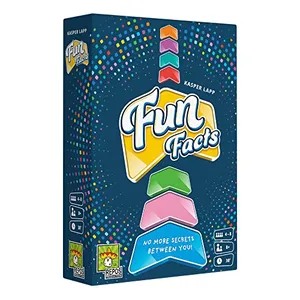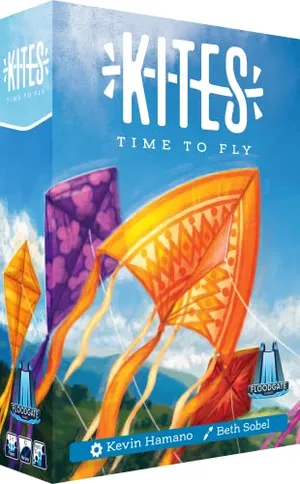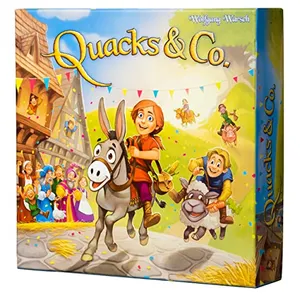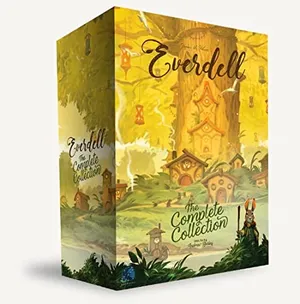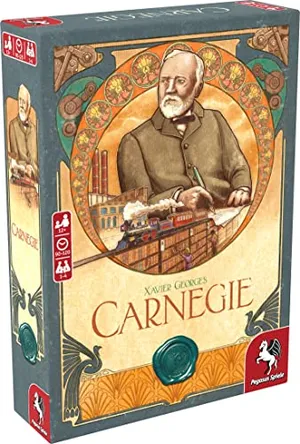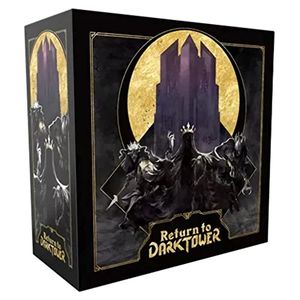The Best Board Games of 2022
Players of all ages will have to make room in their closets for these selections
:focal(700x527:701x528)/https://tf-cmsv2-smithsonianmag-media.s3.amazonaws.com/filer_public/10/c4/10c49d11-a22e-4668-93eb-1b8370f75d58/board_games_2022.png)
It’s a safe bet that if you anticipated a new board game in 2020, it probably came out at the end of 2022. Kickstarter, the online fund-raising platform, has dominated the board game industry; it’s a place where designers can effectively find their audience before the game is even made. But pandemic frustrations, zero-Covid closures in Chinese factories and shipping costs meant that the entire industry became tangled up in delays.
Now, however, a combination of backlogged games and the innovation stirred by designers stuck at home has produced a bumper crop of new board games, from the light and family-friendly to 30-pound boxes stuffed with goodies.
Just like what you find in Hollywood, this year’s offerings include some highly anticipated sequels and reboots, with a smattering of original concepts that promise to electrify your game night. From competitive duels to party games to cooperative quests to solo play, here are ten of the year’s best.
Fun Facts
Good for: family parties
Kind of like: Apples to Apples, but more personal
Ages: 8+
Players: 4-8
Fun Facts might have a forgettable name, but it’s a memorable game, especially if you play it with the people you’re closest to. “It’s the game I break out with my family at the holidays,” says Kathleen Donahue, owner of the Washington, D.C. game store Labyrinth. And although it’s a cooperative game, it seems likely to start some family squabbles.
Each round, the game asks players a personal question with a numerical answer, from “How many days did your longest trip last?” to “How long is your ideal night of sleep?” or “To what degree (from 1-100) would you call yourself a sore loser?” Every player writes their number on the back of a plastic arrow (using wipe-off pens), and then the group tries, only knowing the players’ arrows, but not the numbers they wrote down, to rank the answers in the right order. The whole group scores points if they sort them correctly, but if Uncle Stu doesn’t think that he’s a back-seat driver and everyone else is convinced he is, everyone loses.
Fun Facts
This simple, fun, surprising, and wholesome cooperative party game will teach you things about yourself and other players.
Flamecraft
Good for: tweens and fantasy fans
Kind of like: Stone Age
Ages: 10+
Players: 1-5
This adorably designed game sits right in the genre of cozy fantasy, where dragons are friendly helpers and witches produce coffee and cake, not curses. It comes with a boxload of cute art and twee pieces, and is a classic “worker placement” game in the European style—if you’ve played anything from Stone Age to Agricola to Lords of Waterdeep, the fundamentals will be very familiar.
Each turn, players send a pet dragon (each with their own name and art) to a local shop, where they either gather resources or use those resources to enchant the shop, scoring points and creating more resources for others to collect. It’s a relaxed game, but with enough strategy to keep older players interested, while the younger ones can be entertained by the style and story.
Kites
Good for: quick-handed coffee drinkers
Kind of like: Galaxy Trucker
Ages: 10+
Players: 2-6
Sometimes you want an intricate strategic game where players take a half-hour to make a single move, and sometimes you just want to yell at your friends and slap cards on the table. Kites is a cooperative game played in real time that only takes about ten minutes to finish. “Totally chaotic fun, with a really good mechanism that drives play,” Donahue tells me.
The goal is to keep all your kites—represented by a series of colored sand timers—afloat. Playing cards in the right order lets you flip the timers before they run out, but players can’t share their hands with each other, and the slowly ebbing sands create highly enjoyable panic and confusion. Small kids might find the speed of the game intimidating; older ones will relish in the chaos.
Kites - Time to Fly! | Fun Family Games for Adults, Teens & Kids | Fun Quick Party Games | 10 Minutes | Ages 10 and Up | for 2 to 6 Players | Easy to Learn
Win together by coordinating to play all the cards and make your kite-flying a soaring success!
John Company, Second Edition
Good for: the history obsessed
Kind of like: Diplomacy, but with colonization
Ages: 13+
Players: 1-6
John Company isn’t for beginners—or anyone uncomfortable with mixing play with dark historical themes. It’s a beautifully crafted simulation of the families behind the British East India Company (EIC) who exploited the Indian subcontinent for two and a half centuries. Players try collectively to ensure the EIC’s military, political and trade dominance—while competing back in England for prestige and place, negotiating for better career paths for their children and positions in Parliament with the money extracted from India. It’s like a Jane Austen novel with notes from historian Edward Said, the author of Orientalism.
Critics have accused board games of indirectly glorifying colonization—perhaps the most famous modern game, Settlers of Catan, is literally about settling an island, while the once-popular game Puerto Rico involves operating colonial plantations. John Company is one of several more recent offerings, such as Spirit Island, that engage with those criticisms. In play, much of the game’s tension lies between trying to do the best thing for your own family (cutthroat negotiations and competition with other players) and attempting to steer the EIC to success in ways that benefit everyone.
But the game doesn’t let you forget that “everyone” here means a handful of rich English families, not the people of India. “When I create a historical game,” says designer Cole Wehrle, “I think first about who are the actors with agency? What do they care about? The story had to be mostly about what was happening in London.”
The scope sounds intimidating, but once you’ve grasped a couple of key mechanisms, it plays easily, following a thorough rewrite from its first edition from 2017. Isaac Childres, the designer of the acclaimed Gloomhaven, agrees, telling me that it was “one of the best gaming experiences [he’d] ever had; everything comes together smoothly and brilliantly.”
Quacks & Co.: Quedlinburg Dash
Good for: small kids
Kind of like: Chutes and Ladders
Ages: 6+
Players: 2-4
For very young kids, this quick and easy race game is a fun half-hour. Loosely based off the popular Quacks of Quedlinburg, a family game for somewhat older kids, Quacks & Co. has players try to speed up their racing donkeys by feeding them the right materials.
The donkeys get moved by drawing chits from a bag, with players collecting money along the way to buy more chits—introducing a level of strategy, such as whether to save up for the most powerful moves or spend on smaller but cheaper ones. But the core of the game is luck, which means smaller kids have a good chance of beating their older relatives, while some very basic mathematics should satisfy the kind of parents who feel every game must be educational.
CMYK Quacks and Co. - A Kid Friendly Version of The Hit Push Your Luck Game
Your job is to help your animal friends win the race by feeding them the best food along the way. Race your way to the finish line and win the town’s coveted Golden Cauldron!
Everdell: The Complete Collection
Good for: family game night
Kind of like: Dominion
Ages: 12+
Players: 1-6
This may be the loveliest board game ever designed; from the 3D tree that towers over the game board to the individual resources—berries, wood, resin and stone—each shaped in a different style and with varied materials, it’s been crafted with overwhelming care and love. The original Everdell came out four years ago; this is a comprehensive recrafting of the game and its supplements, together with substantial new material, into a single enormous box.
The goal of Everdell is to build a city for woodland critters, à la the Redwall novels or Mouse Guard comic books. You do that by playing cards from a shared pool, looking for the most effective combinations—you might use a farm to get berries, say, and then berries to buy a barge toad who collects wood, and then use the wood to build a bridge to make getting to the resources in the lake easier. While the art draws from children’s literature, the game itself is much too complex for small kids—and gets exponentially trickier if you add in any of the many optional elements included in the game. But for experienced players, Everdell provides endless optional variety, from sending animal critters off on far-flung expeditions to a cooperative mode that pits the players against a malicious spider queen.
Everdell Complete Collection,6 players
Dive tailfirst into the world of Everdell with the Complete Collection. Build a city of critters and constructions and explore the Emerald Valley and beyond; celebrate the Bellfaire, wonder at Newleaf’s mechanical marvels, trek into the Spirecrest Mountains, explore the underwater depths of Pearlbrook, and chance the dangers of Mistwood.
Frosthaven
Good for: Dungeons and Dragons fans
Kind of like: Gloomhaven, Descent: Legends of the Dark
Ages: 14+
Players: 1-4
Hotly anticipated by serious gamers, this Kickstarted sequel to 2017’s Gloomhaven—which sits comfortably atop many best game ever lists—got caught up in the production delays of the pandemic but is finally shipping to backers and shops. Like Gloomhaven, it’s a cooperative campaign game where players take their fantasy heroes through a series of tactical battles, unlocking more and more content as they go and mastering complex combinations of powers and terrain. One of the joys of Frosthaven is getting to open more and more boxes; it’s like a series of little Christmases as you progress through the campaign.
“We wanted to give players more of everything,” explains Childres, the designer. A big difference from Gloomhaven is a greater emphasis on the characters’ home base; this time you’re not saving a city but building one out in the wilderness. An intricate crafting system adds another level of resource management. But it’s not for the fainthearted: Exploring everything in Frosthaven would take at least 100 hours of gameplay, and even getting a copy is likely to be tricky for a few months, as the Kickstarted orders take priority before consumers can reliably get retail versions in stores.
Lanzerath Ridge: Battle of the Bulge
Good for: solitary gamers
Kind of like: Pavlov’s House, tower defense video games
Ages: 10+
Players: 1
Thanks to social distancing, solitaire games blossomed during the pandemic. But even before then, a wave of innovation produced some extremely clever designs and mechanics, such as the side-switching of 2019’s Peloponnesian War, that allowed for solo play as an option for otherwise competitive board games. Lanzerath Ridge is a tightly crafted World War II game based on a real historical skirmish, where a handful of American troops held off 500 Germans for nearly an entire day, which kicked off the better-known Battle of the Bulge.
The game builds off the “Valiant Defense” system pioneered in earlier historical solitaries like the Stalingrad-set Pavlov’s House; the player has to survive a fixed number of turns, each of which sees the enemy throwing new, randomized attacks at them. A lovely board helps make this feel like something that benefits from being a physical game, not just a digital one, and even with a set battlefield, the game is challenging enough, and the range of workable strategies big enough, to allow for multiple playthroughs.
Carnegie
Good for: history fans with spare time
Kind of like: Ticket to Ride
Age: 12+
Players: 1-4
Universally recommended by everyone I spoke with, Carnegie has been one of the biggest hits of 2022. “It’s been one of the most popular games in the store,” notes Donahue. It’s reminiscent of earlier trade and commerce games like Ticket to Ride, the Roman-set Concordia and the hefty Brass series. It’s a chunky game that mixes several different mechanisms to very satisfying effect. Over time you build up your company by adding new departments, from logistics to human resources, and assigning workers to them.
But each department also allows you to take a range of new actions, including commerce and railroads, researching new technologies and, of course, earning profits from all of them. But in keeping with the spirit of the 19th century, those profits matter less than the prestige you earn from them as you compete with other players to fund philanthropic efforts and come out as the final victor.
Carnegie has a particularly strong solo mode that pits you against a mechanically simulated version of the game’s namesake, steel magnate Andrew Carnegie. And unlike some engine-building offerings, the game has enough randomized variety to avoid the problem of a single optimal strategy. Be warned, though: At least at first, games will run a lot longer than the 90 minutes promised on the box.
Carnegie
Players compete to grow their companies through shrewd investments in real estate, industry, and transportation. Through careful observation of their opponents' choices, players will find ways to take sole advantage of lucrative opportunities.
Return to Dark Tower
Good for: 1980s kids
Kind of like: Talisman
Ages: 10+
For anyone who can remember staring longingly at the ads for the original Dark Tower game, a favorite of the early 1980s, this nostalgia-laden revival is an easy sell. The first Dark Tower was pitched off its titular component, a fine piece of early electronica that spat out instructions at players as the game progressed. It wasn’t a very good game, but the tower itself was incredible.
The four-decades-later sequel plays on that nostalgia, plopping a new Dark Tower in the middle of a well-designed adventure game in a familiar mode—think Journeys in Middle Earth or Descent: Legends of the Dark. Like those games, Dark Tower combines the physicality of the board game with the convenience of an app. “Apps have really opened up a lot of new space for designers,” Sebastian Bae, a professional game designer for the U.S. military, tells me, pointing to the ease of tracking information and offering sudden surprises, especially for cooperative games. And the appeal of a big old tower that makes strange noises hasn’t gone away.
Return to Dark Tower
Together, players gather resources, cleanse buildings, defeat monsters, and undertake quests to build up their strength and discern what foe ultimately awaits them. When the heroes face the tower, the game shifts into its dramatic second act, where the players have one chance to defeat the enemy once and for all.
A Note to our Readers
Smithsonian magazine participates in affiliate link advertising programs. If you purchase an item through these links, we receive a commission.
